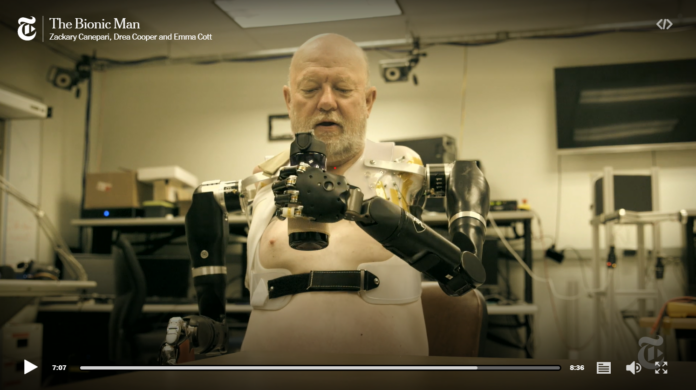Engineers at the Johns Hopkins University Applied Physics Lab have developed a next-generation prosthetic: a robotic arm that has 26 joints, can curl up to 45 pounds and is controlled with a person’s mind just like a regular arm.
Researchers think the arm could help people like Les Baugh, who lost both arms at the shoulder after an electrical accident as a teenager. Now 59, Mr. Baugh recently underwent surgery at Johns Hopkins to remap the remaining nerves from his missing arms, allowing brain signals to be sent to the prosthetic.
Mr. Baugh’s custom socket can pick up brain signals to control the arms, known as Modular Prosthetic Limbs, or M.P.L., just by thinking about the movements.
Mike McLoughlin, the chief engineer of research and exploratory development at the lab, said that as the remapped nerves grew deeper, it was possible that Mr. Baugh would feel some sensation in his prostheses. Each arm has over 100 sensors, and other amputees who have had the same surgery reported being able to feel texture through the M.P.L.
Analysis
This article really shows the leaps robotics and prosthetics have gone for people, to be able to regain some way of their arms back and that there isn’t a limit to time for that since Les Baugh lost his arms many decades ago but even at the age of fifty-nine, he’s able to still use this technology, meaning there is no set time limit to be able to use this technology. Although he has adapted his life to flow smoothly without his arms, and most likely won’t benefit a tremendous amount from these robotic arms, it shows that this will be able to help others that have just lost their arms through an accident and might be able to somewhat do certain activities independently again.




